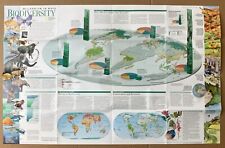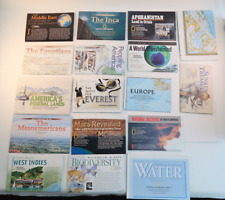
A new study in this week’s issue of Science reveals how free-floating icebergs are a haven for a startling array of creatures. The researchers behind the study say that these floating islands of ice have a major impact on the ecology of the ocean around them, with thriving communities of seabirds above and a web of phytoplankton, krill, and fish below.
The study reveals that icebergs hold trapped terrestrial material, which is released as they melt. The researchers discovered that this process produces a halo effect, with significantly increased phytoplankton, krill and seabirds out to a radius of more than two miles around the icebergs.
The researchers traveled to Antarctica to compile their findings after using satellite images to select two icebergs to study in detail. The icebergs in the study were up to a dozen miles long and more than 120 feet high, with one extending nearly 1,000 feet into the depths.
This new finding may throw yet another variable into the already extraordinarily complex simulations that scientists use to try and understand the Earth’s climate and ocean systems. “While the melting of Antarctic ice shelves is contributing to rising sea levels and other climate change dynamics in complex ways, this additional role of removing carbon from the atmosphere may have implications for global climate models that need to be further studied,” notes Smith.
The researchers found that phytoplankton around the icebergs was enriched with large diatom cells, known for their role in enriching ice-edge communities in polar oceans. “As diatoms are the preferred food for krill, we expect the changes in phytoplankton community composition to favor grazing as a key biological process involved in carbon sequestration around free-floating icebergs,” said co-researcher Maria Vernet.
It remains to be seen how much of an impact the new findings will have on existing climate and oceanographic models. It’s likely, however, that the influence icebergs have will only grow as they increase in number; something observed by the National Ice Center, which has recorded a substantial increase in large iceberg numbers in recent years.
Related articles:
Fertilization Of Phytoplankton Not A Solution For CO2 Removal
Swimming Critters Add New Variable To Climate Confusion
Plankton Generating Oceanic Cloud Cover


















Comments are closed.